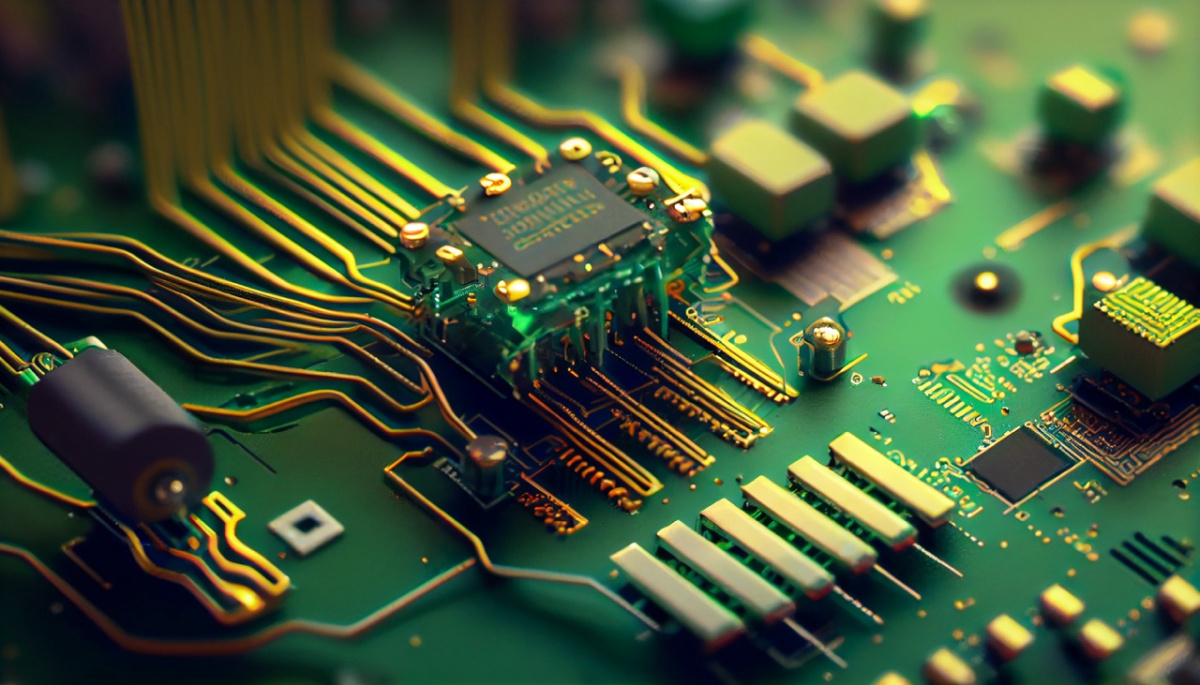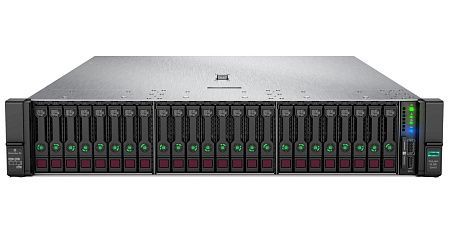In March 2021, HPE launched a line of HPE ProLiant DL325 Gen10 Plus v2, HPE ProLiant DL385 Gen10 Plus v2, HPE ProLiant DL345 Gen10 Plus and HPE ProLiant DL365 Gen10 Plus servers with support for AMD EPYC 3 processors. Moreover, EPYC 3 processors are supported on Cray supercomputers and in Apollo system servers.
Below we have listed HPE servers and systems that support the new AMD EPYC 3 processors:
- HPE Cray EX supercomputer EX425;
- HPE Cray EX supercomputer EX235n;
- HPE Cray EX supercomputer EX235a;
- HPE ProLiant DL325 Gen10 Plus v2 server;
- HPE ProLiant DL385 Gen10 Plus v2 server;
- HPE ProLiant DL345 Gen10 Plus server;
- HPE Apollo 6500 Gen10 Plus (system with HPE ProLiant XL645d Gen10 Plus server);
- HPE Apollo 6500 Gen10 Plus (system with HPE ProLiant XL675d Gen10 Plus server);
- HPE Apollo 2000 Gen10 Plus (system with HPE ProLiant XL225n Gen10 Plus server);
- HPE ProLiant DL365 Gen10 Plus server.
Generation of EPYC 7003 processors
A couple of years ago AMD presented EPYC 7002 (Rome) processors with PCIe Gen4 support. EPYC 7003 processors provide higher levels of efficiency and security, as well as a number of other advantages compared to other manufacturers.
The generation of x86-compatible AMD EPYC 7003 server processors, codenamed Milan, was first presented at CES 2021. The EPYC 7003 series is based on the new Zen 3 architecture (which has been used in consumer Ryzen 5000 processors). These processors can be used in the following departments:
- High-performance computing (HPC) systems;
- Enterprise applications;
- Cloud environments;
- Databases .
EPYC 7003 family innovation:
Performance
- According to the test results, the processor showed the best level of performance per thread and per core.
- Several crystals on one Infinity FabricTM Gen2 chip (xGMI-2).
Computations
- Dissipated power 120-280 W.
- AMD 64 cores processor with Zen3 architecture with 128 threads.
- Smaller NUMA domains with reduced access latencies and a smaller system diameter (instead of one chip with 32 cores, 4 chips with 8 cores are used).
- 32 MB L3 level cache per core, accessible from each chipset.
Integrated I/O without special chipset
- 128 PCIe Gen3/4 lanes.
- 162 lane option (2P configuration).
- Up to 32 directly connected SATA or NVMe devices.
- For PCIe, SATA and SCI (Scalable Coherent Interconnect).
- Server control hub (with USB, UART, SPI, LPC, I2C protocols).
Memory
- Capacity: 2 DIMMs per channel with 4 TB per socket (using 256 GB DIMMs).
- RDIMM, LRDIMM, 3DS, NVDIMM-N memory modules are available.
- 8 DDR4 channels with ECC error correction code (up to 3200 MHz).
- Possibility of 6 channels of interleaving memory access.
Security
- SNP (Secure Nested Paging).
- Secure Encrypted Virtualization & Register Encryption.
- Dedicated security subsystem.
- Seсure Memory Encrysption (SME).
- Secure Boot (Hardware Root of Trust).

The architecture of the EPYC 7003 chip with controllers and a security processor.
Today, we will explore a selection of HPE ProLiant servers featuring AMD EPYC 7003 processors, including the HPE ProLiant DL345 Gen10 Plus server designed for database applications and the HPE ProLiant DL365 Gen10 Plus server tailored for VDI infrastructure. Additionally, below, we have reviewed the foundational configuration of the HPE ProLiant DL325 Gen10 Plus v2:
|
Characteristic |
Description |
|
Basic configuration |
HPE ProLiant DL325 Gen10 Plus v2, part number P38480-B21. |
|
Form factor |
1U form factor, for rack mounting. |
|
CPU |
1 AMD EPYC 7443P processor with an operating frequency of 2.85-4.0 GHz, 24 cores, 128MB L3 cache memory, 200W, Maximum number of processors per server – 1, Maximum amount of RAM supported by the processor – 4TB, Maximum effective RAM frequency supported by the processor – 3200 MT/s. |
|
Power |
One 800W power supply with hot-swappable capability and redundancy when installing a second PSU. |
|
Power supply |
100/240 V, 6.7/3.3 A, 50/60 Hz. |
|
RAM |
Pre-installed 32GB memory: 1 x HPE 32GB (1x 32GB) Dual Rank x4 DDR4-3200 CAS-22-22-22 Registered Smart Memory Kit. Supported memory types: HPE SmartMemory DDR4 Registered DIMM (RDIMM) – up to 16 modules, HPE SmartMemory DDR4 Load Reduced DIMM (LRDIMM) – up to 16 modules. Maximum RAM capacity –4096 GB (16x256GB) for LRDIMM, 1024 GB (16x64GB) for RDIMM. 8-channel memory controller integrated into the CPU: 16 slots per server, 16 slots per CPU, 2 modules per channel. Memory operating frequency – 3200MT/s (1 DPC), 3200MT/s (2 DPC), DPC - DIMM Per Channel. Maximum memory subsystem throughput – 205 GB/s. HPE SmartMemory technology support is available. |
|
Network Controller |
HPE Ethernet 10GB 2-port replaceable I/O Module is installed. BASE-T Broadcom BCM57416 OCP3 Adapter. 1GB management port (Dedicated iLO management port). Additional network adapters in expansion slots are provided. |
|
Disk subsystem |
Up to 8 Hot Plug 2.5" SFF SAS/SATA HDD/SSD drives with hot swap Included: PCIe SSDs in expansion slots, MicroSD drive in USB connector, RAID1 support, up to 2 Hot Plug 2.5" SFF SAS/SATA/U.3 HDD/SSD drives with hot swap in the basket on the front panel or up to 2 Hot Plug 2.5" SFF U.2/U.3 NVMe SSD drives with hot swap in the basket on the front panel, 2 M.2 PCIe 3.0 x8 22110 drives per PCIe expansion card (RAID 0/1 support), 2 M.2 SATA drives per PCIe expansion card. |
|
Disk Subsystem Controller |
HPE Smart Array P408i-a 12GB SAS Controller RAID Module (RAID 1/10/5/50/6/60/HBA) 8 Ports Internal, Smart Path, 2GB Cache, Smart Cache. Integrated S100i controller. Battery protection of the controller's cache memory. Optionally in the connector on the motherboard: RAID module HPE Smart Array P816i-a SR Gen10 (16 Int 4GB Cache+Smart) 12G SAS Modular Controller, RAID 0/1/10/5/50/6/60/JBOD, Smart Cache. Additionally in expansion slots: RAID controllers HPE Smart Array or Tri-Mode controller according to the configurator list. |
|
Optical drive |
HPE SATA DVD-RW Optical Drive (it is not compatible with optional drive cage), Installation kit is required. |
|
Video adapter |
Integrated video adapter, 16MB video memory, 1920 x 1200@60Hz (32 bpp). |
|
Expansion slots |
Riser card-1: Slot 1 PCIe 4.0 x16/x16 Full Length/Full Height Slot, Slot 2 PCIe 4.0 x16/x16 Low Profile Slot. Riser card-2, optional (one of the following options): Slot 3 PCIe 4.0 x16/x16 Low Profile Slot, Slot 3 PCIe 4.0 x16/x16 Half-Length/Full Height Slot (only when Slot-2 Riser Card-1 is free). |
|
Interfaces |
On the front panel: 1 USB 3.1 port, iLO Service Port. On the back panel: 2 USB 3.1 ports, DB-15 video connector, 4 GbE RJ-45 ports, 1 GBE RJ-45 management port, serial port (optionally). Internal Ports: USB 3.1 port. |
|
Supported Operating Systems |
SUSE Linux Enterprise Server (SLES) 12 SP5, SUSE Linux Enterprise Server (SLES) 15 SP2, Red Hat Enterprise Linux (RHEL) 8.3, VMware ESXi 7.0 U1/U2, VMware ESXi 6.7 U3, Windows Server 2016, Windows Server 2019 (latest version). |
|
Embedded controls |
Embedded Remote Support – embedded remote support tools that automatically transfer information about hardware events to HPE service departments. HPE iLO (HPE Integrated Lights-Out), Firmware HPE iLO5 – status monitoring, remote management, alerts and reports. Intelligent Provisioning – a tool for automated deployment of server infrastructure. UEFI – Secure configuration and boot of the server in accordance with the industry-standard Unified Extensible Firmware Interface (UEFI). HPE RESTful API – Application Developer Interface. |
|
Cooling |
8 controlled hot-swappable and redundant system fans. A set of high-performance fans. |
|
Rack Mounting |
A set of retractable rails for installation in a rack. Additionally: Cable organizer, Front panel trim with lockable option, Tamper sensor. |
|
BIOS |
HPE Server Unified Extensible Firmware Interface (UEFI). |
|
Size |
Height – 4.29 cm, Width –43.46 cm, Depth – 64.43 cm. |
|
Weight |
Minimum – 12 kg, maximum – 16 kg. |
|
Terms of Use |
Humidity no more than 90%, Operating temperature from +10°C to +35°C, Storage temperature from – 30°C to +60°C. |
Database server
AMD processors are a good choice for virtualization operations. Thus, all corporate database servers that require a large amount of local disk memory can be installed and used as virtual servers on a single physical server, such as the ProLiant DL345 Gen10 instance. NVMe drives are responsible for high recording and writing speeds, while the disk subsystem is able to quickly respond to requests and ideally cope with parallel requests.
The initial level of the server family includes a new cost-effective single-socket ProLiant DL325 Gen10 Plus v2 platform (height –1RU), specially developed in order to ensure support for entry-level VDI and company database deployments. These servers are a good solution for use in company branches (RoBo), as well as, for example, in the healthcare sector.
However, it is worth noting that servers of this series such as DL345 and DL365 based on EPYC can support almost any workload requiring a large amount of memory and local storage with a significant computing frequency, which makes servers of this family an excellent option for deploying corporate databases.
Despite certain shortcomings and difficulties associated with performing any specialized function, the improved functionality of the EPYC 7003, including a shared L3 cache and increased memory capacity, makes this processor an excellent option for any workload. This leads to achieving the highest level of functionality, performance and security by companies using these servers. The specialists at Newserverlife are ready to assist you in selecting a server that truly meets your requirements.
Specialists of our company are ready to help you purchase the server and select the necessary server configuration for any required task.





